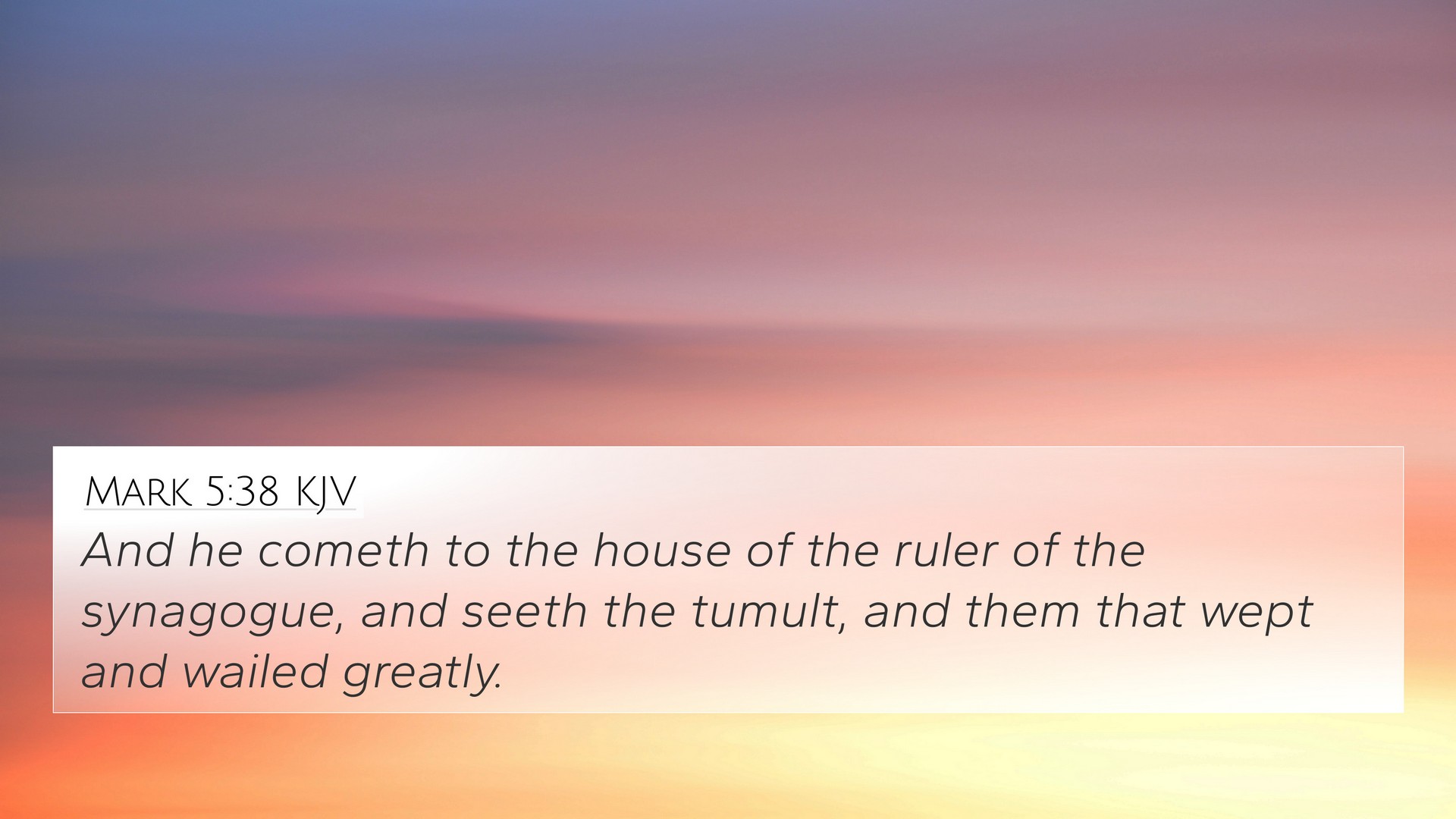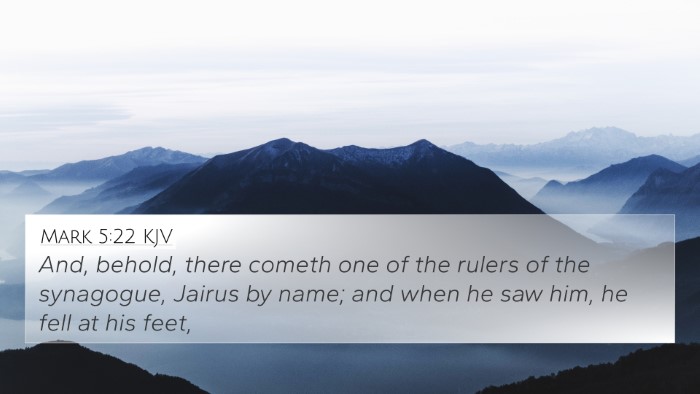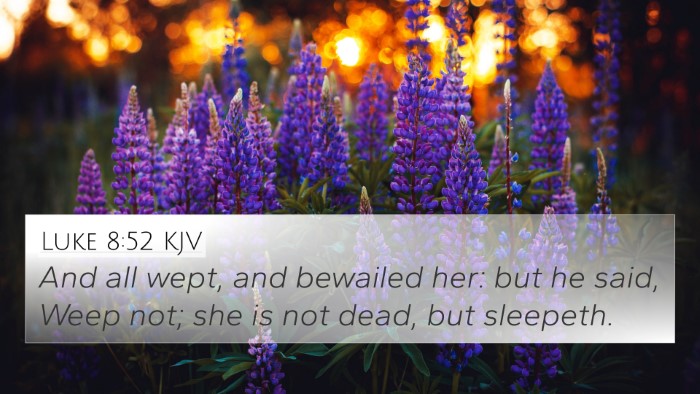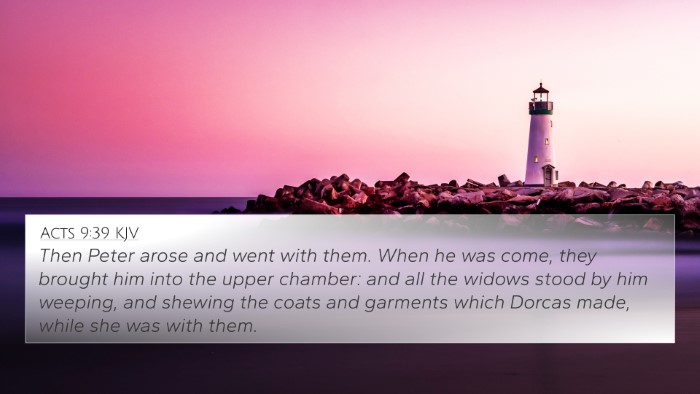Understanding Mark 5:38
Mark 5:38 states: "He came to the house of the ruler of the synagogue; and he seeth the tumult, and them that wept and wailed greatly." This verse occurs during a pivotal moment in the ministry of Jesus when he is called to help the daughter of Jairus, a synagogue ruler.
Verse Context
In this passage, we see Jesus entering the home of Jairus where he finds a scene of grief and mourning. The presence of relatives and friends weeping indicates the daughter's serious condition, and this emotional turmoil sets the stage for Jesus's miraculous power to be displayed.
Commentary Insights
- Matthew Henry: Henry emphasizes the contrast between faith and fear. Here, he notes that despite the overwhelming mourning, Jesus arrives to restore life where death seems irrevocable. His arrival signals hope amidst despair.
- Albert Barnes: Barnes points out the cultural practice of mourning, which included professional mourners who were often hired to grieve. This context underlines the severity of the situation and the deep sorrow surrounding Jairus's family.
- Adam Clarke: Clarke discusses the significance of Jesus interacting with the mourners. His presence not only addresses physical ailments but also acknowledges human emotions, demonstrating compassion in the face of death.
Bible Verse Cross-References
This verse can be linked with several other biblical passages that enhance its meaning:
- Matthew 9:18-26: This account of the healing of the daughter of Jairus offers a parallel narrative that highlights faith and Jesus’s authority over death.
- Luke 8:40-56: Similar to the Mark passage, it elaborates on the story with additional details, emphasizing Jesus’s compassion and miraculous power.
- John 11:35: The story of Lazarus ties into themes of mourning and Jesus’s emotional engagement with grief.
- Isaiah 53:4: This prophetic verse is echoed in the emotional scenes of mourning, foreshadowing the suffering servant who bears our grief.
- 1 Corinthians 15:55: The proclamation of victory over death is a crucial connection to the resurrection theme present in these accounts.
- Revelation 21:4: It promises a future where God will wipe away every tear, connecting to the hope amidst the present sorrow.
- Hebrews 2:14-15: This passage speaks on how Jesus came to conquer death, relating to the authority he demonstrates in Jairus's story.
Thematic Bible Verse Connections
The scene at Jairus's house illustrates profound themes such as:
- Faith: The necessity of faith in Jesus as a healer and restorer of life.
- Compassion: Jesus’s interaction with those who mourn highlights His empathy and care for human suffering.
- Hope: Even in dire situations, the arrival of Jesus brings an assurance of hope.
- Authority: His ability to raise the dead demonstrates His divine authority over life and death.
Cross-Referencing Bible Study Methods
When engaging in a cross-reference Bible study, tools and methods can enhance your understanding:
- Bible Concordance: Use a concordance to locate key terms and their occurrences throughout the Bible.
- Bible Cross-Reference Guide: Consult guides that link related verses and themes for comparative studies.
- Comprehensive Bible Cross-Reference Materials: These resources can extensively cover connections across scripture.
- Cross-reference Bible Study Practices: Grouping verses by themes or events can reveal deeper insights.
Conclusion
Mark 5:38 is a poignant reminder of Jesus’s power and compassion in the face of human suffering. By cross-referencing this verse with related scriptures, one can appreciate the interconnectedness of biblical narratives and the unified message of hope that permeates the Bible.
For those asking, "What verses are related to Mark 5:38?" or "How do these verses connect?", studying the context and cross-referencing themes provides a richer understanding of scripture.








